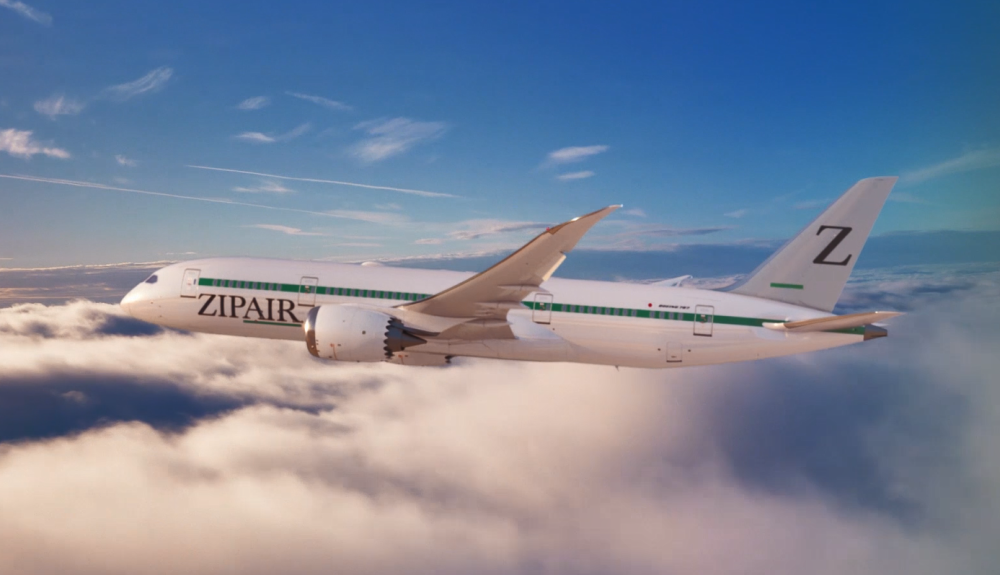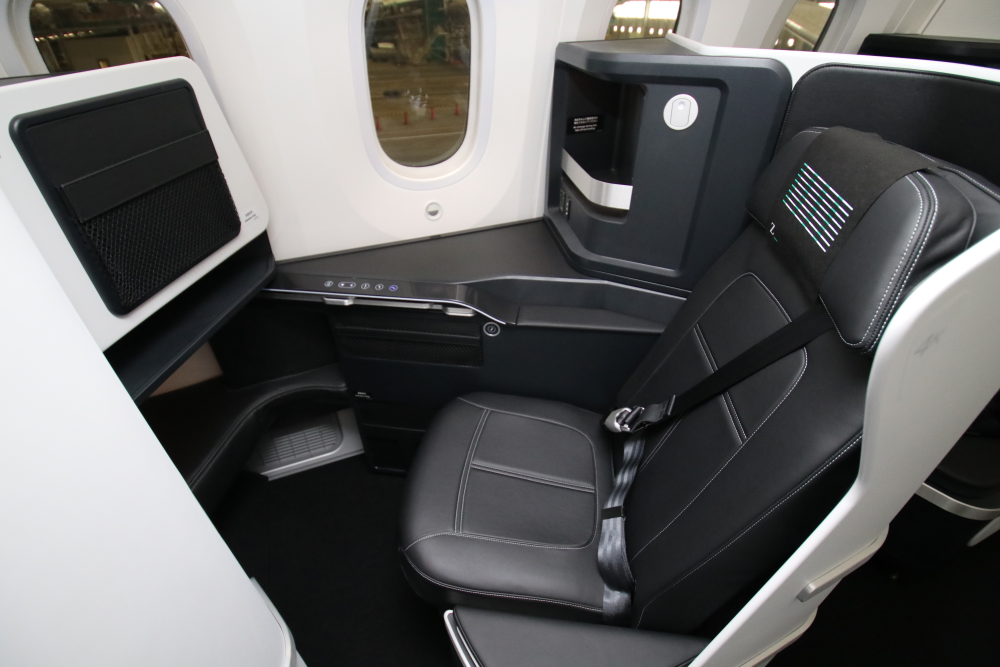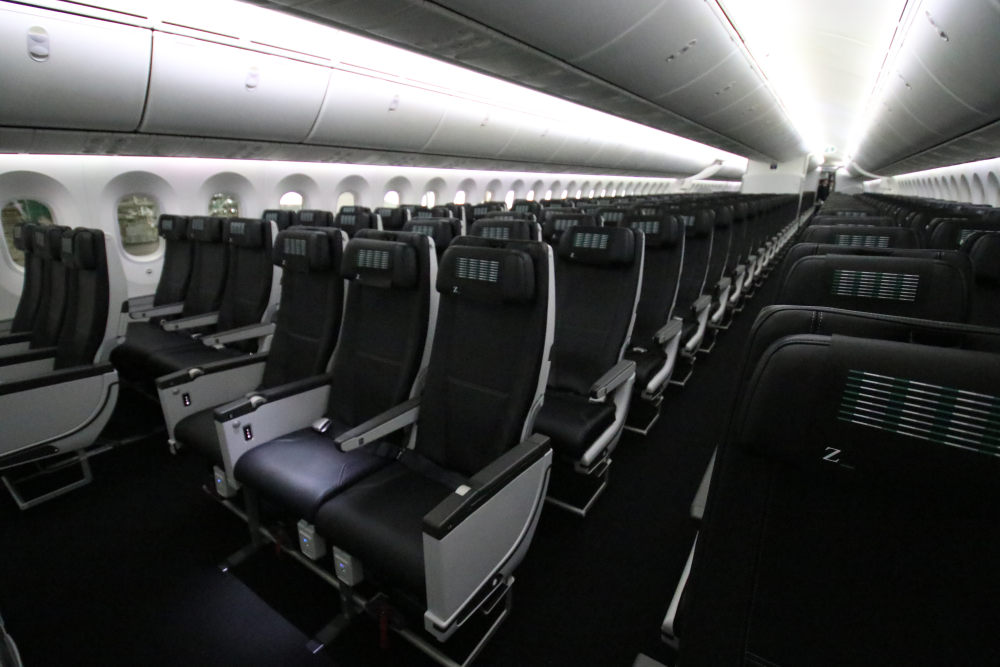The new basic with ZIPAIR
This is a special feature from PAX Tech's February 2021 Color Schemes, Lighting and Connectivity digital edition.

The 787s of ZIPAIR now operate to three routes, Bangkok, Incheon and Honolulu
Lost in the headlines of a worldwide virus and its devastating effects on the travel industry, a small startup airline with a big partner boarded its first passengers in the fall and is moving ahead with ambition and experimental approaches.
In 2021, ZIPAIR Tokyo has added a third route to its Asia-Pacific service and plans to acquire up to two 787-8 Dreamliners per year. Some features of the service require onboard purchasing while others are complimentary. However, the entire inflight service component relies on well-known partners, while shying away from the typical label.
“Rather than putting ourselves in the low-cost carrier box, we’ve examined and formulated our service to become a ‘new basic’ airline,” explains Mashahiro Nishiyama, ZIPAIR’s Marketing Manager, in a blog post on the website of one of its important partners, Panasonic Avionics.
With the roll out of ZIPAIR, parent company Japan Airlines is offering a carrier specializing in medium- to long-haul routes. Along with that, Nishiyama says, is a new service model designed to meet diversified needs of airline passengers and create new demand. Japan Airlines has larger goals in mind as well: A desire to bring more tourists to Japan, up to 60 million per year by 2030. ZIPAIR and Japan Airlines also want to promote the use of Tokyo Narita Airport (NRT), which is scheduled to expand its functions in the near future.
To reach those goals, they are starting out small. When ZIPAIR launched in June of last year, it had two routes from NRT: Bangkok and Seoul Incheon. The airline has since added Honolulu to its service. In the fall, tickets on ZIPAIR Tokyo were selling at approximately US$180 for one way flights and $544 for round trip.
“In addition, the services offered by our parent company, JAL, we believe that there was demand for an LCC market within Japan,” Nishiyama says. The airline’s official launch of passenger service on the two routes took place June 3 of last year, but true to the world problems, its initial runs were cargo only. Nonetheless, the airline operated the routes through the summer and first passengers were boarded in October.
In the cabin
ZIPAIR’s two 787s seat 290 passengers in a two-class configuration with a fare structure that could be different from any other airline in the world. Eighteen seats are in the “ZIP Full-Flat Value” Section and 272 in “Standard Value.” There is also a service called “U6 Standard Value” which offers a separate, lower fare for children under the age of six years.
Seats in ZIP Full-Flat Value are leather and manufactured by Japanese company Jamco and laid out at a pitch of 42 inches and a width of 20 inches. True to the name, the seats recline to 180 degrees.

ZIPAIR’s Full-Flat class has 18 seats, with Jamco as the supplier
In Standard Value, ZIPAIR has selected Recaro seating at a pitch of 31 inches, a width of 17 inches and three-inch angle of recline. Standard Value offers a tablet holder in the seatback and power supply for both USB and standard plug-ins.
What will not be found in either cabin is embedded inflight entertainment and seatback screens. Instead, ZIPAIR has decided to offer passengers complimentary Wi-Fi streamed into their own personal electronic devices. Not only are passengers free to enjoy entertainment, but ZIPAIR also allows them to make purchases. Light meals and amenities are currently part of the portfolio, however Nishiyama says the airline will soon be looking to increase the offering.
Panasonic supplies ZIPAIR with its inflight connectivity. Paul Kent, Director of Connectivity Products at Panasonic, tells PAX Tech, airlines are relying more heavily on their IFEC component for passenger satisfaction, and ZIPAIR is one example.

Recaro seating at a 31-inch pitch is in the Standard Value class
“Many are using this level of service as a differentiator to their competitors,” he says.
Teamed with the complementary Wi-Fi from Panasonic is the Inflight Self-Ordering System supplied by Collins Aerospace. There are three main components that Collins developed for ZIPAIR Tokyo: an administrative and catering portal that is used by catering staff, a passenger portal that enables on-demand self-service during the flight, and a crew app for inventory and passenger management.
Collins sees the solution as not only a handy way for the airline to interact, but a solution that could help passengers regain confidence to fly again. The Self-Ordering System minimizes the need for crew contact, and gives passengers the ability to place orders on their own devices. Payments are processed in real time to minimize risk of credit card fraud.
As for any business, the first year of operation will be critical to its success. Nishiyama says that before the pandemic hit, routes to Bangkok and Incheon showed strong demand.
“The key for a long-haul LCC is to improve the utilization of our aircraft,” he adds. “In addition, we will look to develop new, innovative services which are not offered by other carriers in the industry.”

